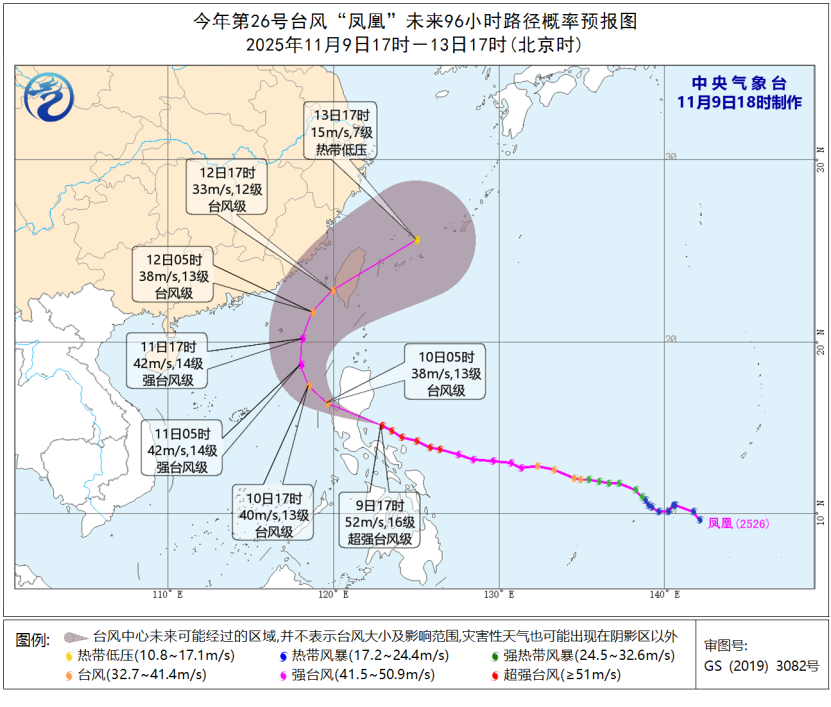
On Sunday, China’s Ministry of Natural Resources activated a Level-IV marine disaster emergency response in anticipation of the impacts from Typhoon Fung-wong. Hazardous sea conditions, including high waves, are forecast for the East China Sea and the South China Sea from Sunday through November 13.
According to a statement released via the ministry’s official WeChat account, the National Marine Environmental Forecasting Center has issued an orange alert for ocean waves, signaling potentially dangerous marine conditions.
Typhoon Fung-wong intensified into a super typhoon early Sunday, bringing with it strong winds, significant temperature drops, and heavy rainfall. The storm is currently moving west-northwest at approximately 30 kilometers per hour. According to the National Meteorological Center (NMC) of China, which issued an update at 11:00 am on Sunday, Fung-wong is expected to make landfall on the eastern coast of Luzon, the Philippines, by Sunday evening. Peak wind speeds could reach up to 52 meters per second.
The NMC also predicts that the typhoon may strike the southwestern coast of Taiwan during the day on November 12 before rapidly weakening afterward.
Over the next two days, most parts of Fujian Province in eastern China will see mostly cloudy skies with light rain in some central and northern areas. However, starting Tuesday, as the typhoon nears, coastal regions of Fujian can expect stronger winds and heavier rainfall. A combination of Fung-wong and an incoming cold front will likely bring gale-force winds to Fujian’s coastal waters and fishing zones, according to local reports from Fujian Release.
In response, China’s Ministry of Natural Resources has directed authorities in affected provinces—particularly Fujian and Guangdong in southern China—to ramp up emergency efforts. These include enhanced monitoring, joint consultations, risk assessments, early warning systems, and disaster evaluations.
The southern and central parts of the South China Sea are already experiencing rough seas, powerful winds, and high waves due to the approaching typhoon. Mariners are strongly advised to avoid hazardous areas, while coastal management agencies are urged to implement preventive measures against possible wave-induced damage.
Meanwhile, international media such as Sky News reported that nearly one million people have been evacuated in the Philippines as Fung-wong, now a super typhoon, approaches the country.
This comes in the wake of an earlier disaster. Typhoon Kalmaegi, the 20th tropical cyclone to affect the Philippines this year, recently swept through large parts of the central and southern regions, triggering severe floods and landslides. According to the Philippine Office of Civil Defense (OCD), the storm has resulted in 224 deaths, with over 100 people still missing and 526 others injured. The OCD released these figures on Sunday, as reported by Xinhua.
In light of the escalating threat, the Chinese Embassy in the Philippines issued a safety advisory on November 7, urging Chinese citizens in the country to stay vigilant, prepare for heavy rain and strong winds, and take appropriate safety measures as Typhoon Fung-wong nears.






